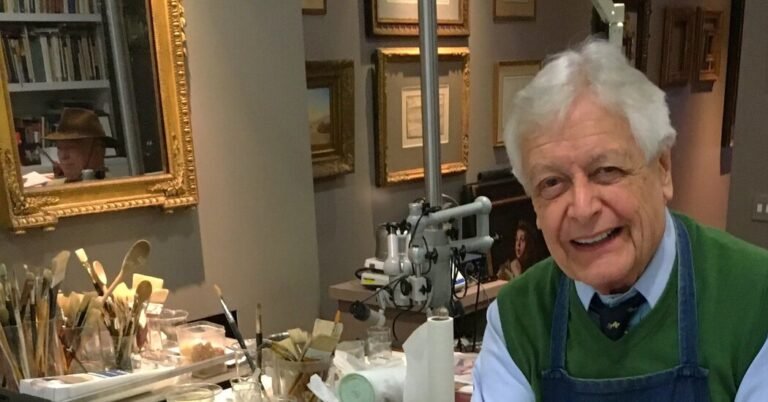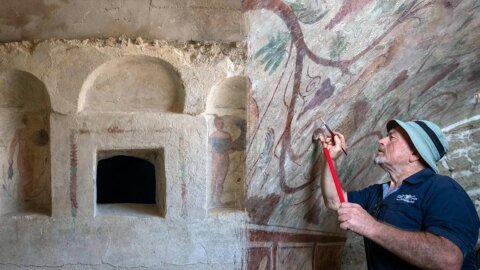To his criticism for The New Criterion, Mr. Grassi brought this tactile sense, his editor, Roger Kimball, recalled in an interview. “You felt that his encounters with the art was hands-on,” he said. “You felt there was a deep interaction, having to do with the senses.”
Mr. Grassi’s analysis of the famous “Madonna and Child” by Duccio di Buoninsegna, a 13th- and early 14th-century work acquired by the Met in 2004 for more than $45 million, the museum’s largest purchase at the time, displays this visual sensitivity.
“Although tiny, it has none of the annoying “look-at-me-with-a-magnifier” precision of a miniature,” Mr. Grassi wrote of the painting in one of his essays. “The artist places the Virgin at a slight angle to the viewer, behind a fictive parapet. The Madonna “gazes away from the child into the distance while he playfully grasps at her veil,” he wrote, adding: “With these subtle changes, Duccio consciously developed an image of sublime tenderness and poignant humanity.”
For centuries the paintings of this early period were held in lesser esteem, compared with the masterworks of the Renaissance. Mr. Grassi was their great champion, an epoch in painting “generally called the primitive period, but which is not primitive at all,” he remarked in an interview with the fine art firm Disegno.
Marco Ralph Grassi was born on July 7, 1934, in Florence, Italy, to Arturo, an art dealer, and Cornelia(Lemky) Grassi, an American from Indianapolis. Mr. Grassi recalled in his book that his parents entertained the liberating American generals in his boyhood home as the war ended, including Mark Clark.
These contacts helped the family gain passage to New York in 1945. Mr. Grassi attended the Delbarton School, a Catholic boys boarding school in New Jersey, and graduated from Princeton with a B.A. in art history in 1956.





